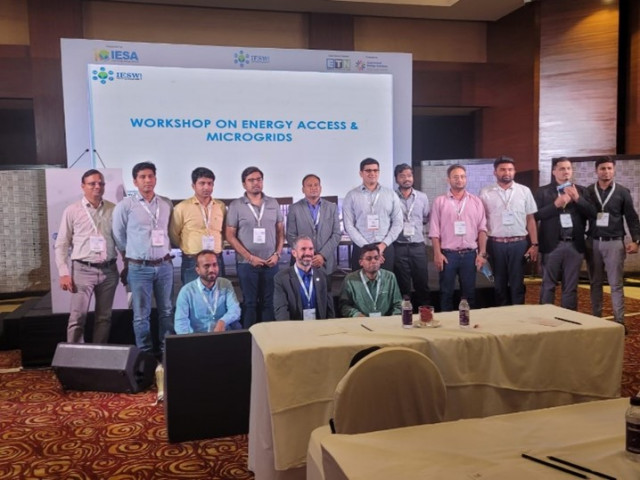An interesting session moderated by Nitin Akhade, Manager - MICRO, Customized Energy Solutions (CES), who also spoke about his experience leading the Rural Electrification and Livelihoods project in Jharkhand.
All speakers related their experiences of working on Microgrid projects in villages in India, some even remote and located in difficult terrains. All stressed on the need to make power accessible and affordable to the villages and help them generate employment through the projects.
Other speakers included:
Stephan Fernands: President of CES
Mr. Fernands spoke about making power generation cleaner and more affordable. Talking about his Visit to the CES microgrid project in Jharkhand, he said that the need is to find ways for the rural communities to benefit from the microgrid deployment, like creating job opportunities for the youngsters in the village itself. "The challenge is not just how to get the light bulb in the homes, but think of more productive uses of electricity."
He believes there is great potential for microgrids in India – at reducing costs, moving things at scale and at innovating. He feels the solutions that they have been able to create in India can form the basis for solving Africa's energy needs as well. "We are actually creating solutions here that can get energy to the last 900 million people who don't have access to electricity. I'm really proud to be part of that journey."
Rekha Krishnan: CEO of Clean Energy Access Network (CLEAN)
Rekha Krishnan spoke about CLEAN's initiatives for rural areas and underprivileged communities where along with microgrids they also cover a range of RE-powered appliances for farms, pumps, sugar, rice cullers, roti making machines, food processors, solar run pottery wheels, etc., as also applications around biogas.
She said that India is innovating a great deal not only on the technology front, but also on the business model aspects. The tremendous expansion in grid that has taken place, she said, should help in creating livelihood opportunities and address the energy access issue or gap.
"Microgrid, electricity using appliances, etc. - all have these have to co-exist to meet the energy needs of the people. There is lots of potential in the grid: working with storage, which will be key; and driven by need like appliances."
Rahul Shelke, Founder & MD - Amperehour
Rahul Shelke spoke about how the growth and development of microgrids in India has opened up opportunities to provide accessible and affordable power to remote rural communities. With the many minigrids now being deployed in India, this experience has also opened up export opportunities, he said.
"Microgrids can be a very good market to work, we can do a lot of innovation in that, on the system side, on the design, plug and play systems, and also the same microgrid can operate at a commercial segment, industrial segment, can operate at the distribution level… this will give us a scale to deploy and that scale will benefit many."
Jaideep Bansal: CEO, Global Himalayan Expedition (GHE)
Recently selected 'Young Global Leader for 2022' by the World Economic Forum, Jaideep Bansal's mission and vision is to create smart, sustainable and carbon-neutral villages. The GHE works towards leveraging technology and tourism to bring sustainable development to some of the remotest mountain and jungle communities of India. Access to some of these villages takes a 3to4-day trek from the nearest motorable road, through mountain passes and glacial river streams.
An inspiring presentation made by Mr. Bansal provided snapshots of their project portfolio: clean energy access through solar, digital education access through smart powered computer lab, solar-powered health access, carbon-neutrality through clean energy cook stoves, livelihood opportunities through homestay-based tourism… all supported by skill development and training.
"We have transformed 350 villages without energy access, impacting the lives of 200,000 people in 5 regions of India - including a 1000-year-old monastery. Empowering the villagers to produce and consume their own electricity."
Read More

